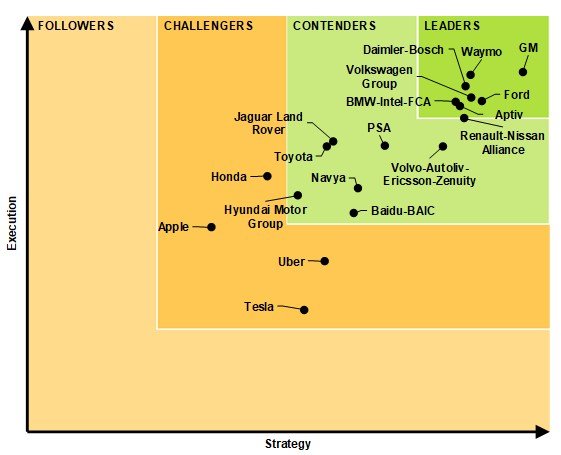Old Dogs Up to New Driverless Tricks
Often it is the challenger brands that bring new ideas to the masses. When you have the likes of Elon…
Often it is the challenger brands that bring new ideas to the masses. When you have the likes of Elon Musk taking us on a journey to Mars and at the same time allowing us to drive from Sydney to Melbourne for free, people tend to take notice.
This too, has been the case in the driverless car market, with the new kids on the block like Tesla, Uber, and Apple stealing the limelight in this burgeoning market. However, a recent report by Navigant.
suggests that the true leaders in the market aren’t the Millenial styled brands, with the iconic car manufacturers leading the way.

The report suggests that General Motors is leading the way in driverless technology, with Google’s rebranded Waymo and Ford being a slightly distant second and third. The top ten is filled with the who’s who of car manufacturing with Volkswagon, BMW, Ford, Reneault and Volvo all featuring.
Based on a strategy and execution axis, Uber, Tesla, and Apple all feature as lowly challenges, even though all three appear to be strategically gearing towards the autonomous vehicle market. The report notes that these new entrants to the market are struggling to overcome manufacturing and distribution challenges, which come with producing cars, something that Tesla has seen as an growing pain for quite a while.
The ranking is based on key elements, including vision, go-to market strategy, partnerships, production strategies, technology, sales, marketing, distribution, product capability as well as product reliability. Here’s the top 10:
Top 10 Vendors:
- GM
- Waymo
- Daimler-Bosch
- Ford
- Volkswagen Group
- BMW-Intel-FCA
- Aptiv
- Renault-Nissan Alliance
- Volvo-Autoliv-Ericsson-Zenuity
- PSA
The report is encouraging for all market leaders. With ideation being critical in driving new products and services, the ability to fund, execute and sell these products is critical. With similar challengers being seen in the banking, retail and energy sectors, a silver lining in the change might be that the big players have the ability to take advantage of it.
Source: Navigant Research





Comments